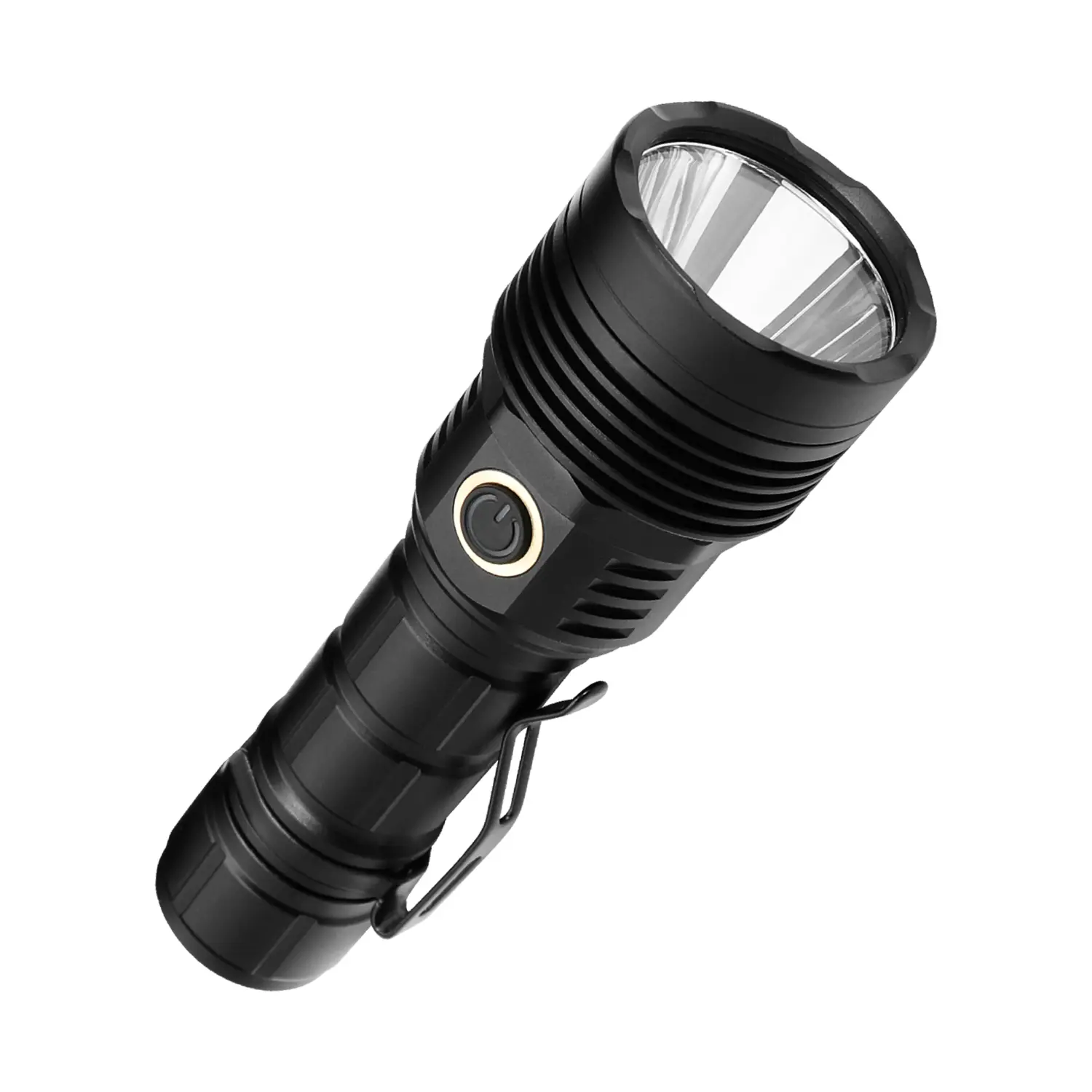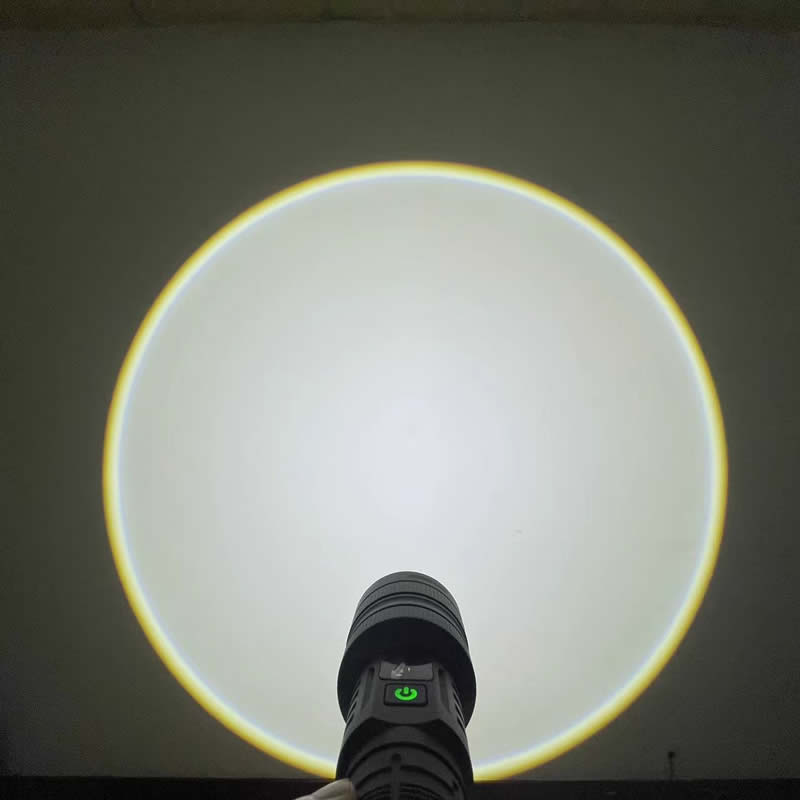Exploring Flashlight Reflector Types
When selecting a flashlight, it's crucial to consider the type of reflector it uses. Two main options available are zoomable and non-zoomable flashlights. The reflector type determines the flashlight's beam adjustability and focus capabilities, making it an essential factor in choosing the right lighting tool.
Flashlight Reflectors: The reflector type plays a key role in determining the versatility and functionality of a flashlight.
Now, let's move on to understanding the specific characteristics of zoomable and non-zoomable flashlights.
Understanding Flashlight Reflector Types
Zoomable Flashlights
Zoomable flashlights are designed to offer adjustable beam distances, providing versatility for various lighting needs. This adjustability allows users to focus the beam, making zoomable flashlights suitable for both short-range tasks and long-range illumination. The ability to customize the beam distance makes these flashlights highly adaptable to different situations, offering a practical solution for diverse lighting requirements.
Non-Zoomable Flashlights
On the other hand, non-zoomable flashlights provide a fixed beam that is ideal for specific lighting requirements. These flashlights are often preferred for tasks that demand a consistent and unchanging light output. Whether it's for detailed work in a confined space or close-range illumination, non-zoomable flashlights offer reliability and stability in their light output, catering to specific needs without the need for adjustment.
LED vs. Incandescent Flashlights
When comparing LED flashlights with incandescent flashlights, it's important to understand the distinctive features and benefits of each type.
LED Flashlights
Energy Efficiency and Durability: LED flashlights are widely recognized for their energy efficiency and durability. They consume less power while offering a longer lifespan, making them a practical choice for various applications. This energy-efficient attribute also contributes to extended battery life, ensuring reliable performance during outdoor activities or emergency situations.
Bright, White Light: LED flashlights emit a bright, white light that enhances visibility in different environments. The intensity and clarity of the light make LED flashlights well-suited for outdoor activities such as camping, hiking, and night-time adventures. Additionally, the white light produced by LEDs is beneficial in emergency scenarios where visibility is crucial.
Incandescent Flashlights
Warm, Traditional Glow: Incandescent flashlights provide a warm, traditional glow that may be preferred for specific tasks or personal preferences. The characteristic warm color of incandescent light can create a comforting ambiance in certain situations or environments.
Unique Advantages: While not as energy-efficient as LED lights, incandescent flashlights have their own unique advantages. Their warm glow may be favored for specific lighting needs where the color temperature of the light is a determining factor.
Importance of Beam Distance
The beam distance of a flashlight is a critical factor that determines its range of illumination, directly impacting its usability in various scenarios. Understanding the significance of beam distance is essential for selecting the right flashlight to meet specific lighting needs.
Versatility in Illumination
The beam distance of a flashlight plays a crucial role in providing versatility in illumination. A longer beam distance allows the light to reach farther, making it beneficial for outdoor activities and scenarios where extended visibility is required. On the other hand, flashlights with a more focused beam are suitable for close-range tasks that demand precision and concentrated lighting.
Considerations for Different Uses
For outdoor activities such as camping or hiking, a flashlight with a longer beam distance can enhance safety and convenience by providing visibility over greater distances. In contrast, professional work or emergency situations may require flashlights with adjustable beam distances to cater to varied lighting needs effectively.
Beam distance in flashlights determines the range of illumination and impacts their usability in different scenarios. Understanding this factor is crucial when selecting the right flashlight for specific needs.
Best Uses for Flashlights
Outdoor Activities
Flashlights play a pivotal role in outdoor activities such as camping, hiking, and night-time adventures. Whether navigating through dark trails or setting up camp after sunset, a reliable flashlight is an indispensable tool for safety and convenience. The right flashlight with a suitable beam distance can illuminate the surrounding environment, enhancing visibility and minimizing potential hazards during outdoor pursuits.
Emergency Situations
In emergency situations, having a dependable flashlight with the appropriate beam distance can be a crucial tool for navigation and signaling. Whether it's a power outage at home, a vehicle breakdown on the road, or an unexpected outdoor emergency, being prepared with the right flashlight can make a significant difference. From guiding rescue teams to providing illumination for essential tasks, a well-chosen flashlight can be an invaluable asset in critical scenarios.
Ideal applications for flashlights encompass various scenarios ranging from outdoor adventures to unforeseen emergencies. A versatile flashlight with an optimal beam distance can enhance safety and provide essential illumination when needed most.
Choosing the Right Zoomable Flashlight
When it comes to selecting the ideal flashlight, understanding the differences between zoomable and non-zoomable options is crucial. Consider your specific lighting needs and intended uses to determine which type of flashlight is most suitable for you. Whether you require an adjustable beam flashlight for versatile illumination or a focusable flashlight for precision lighting, evaluating your requirements will guide you in choosing the right zoomable flashlight to meet your needs effectively.

